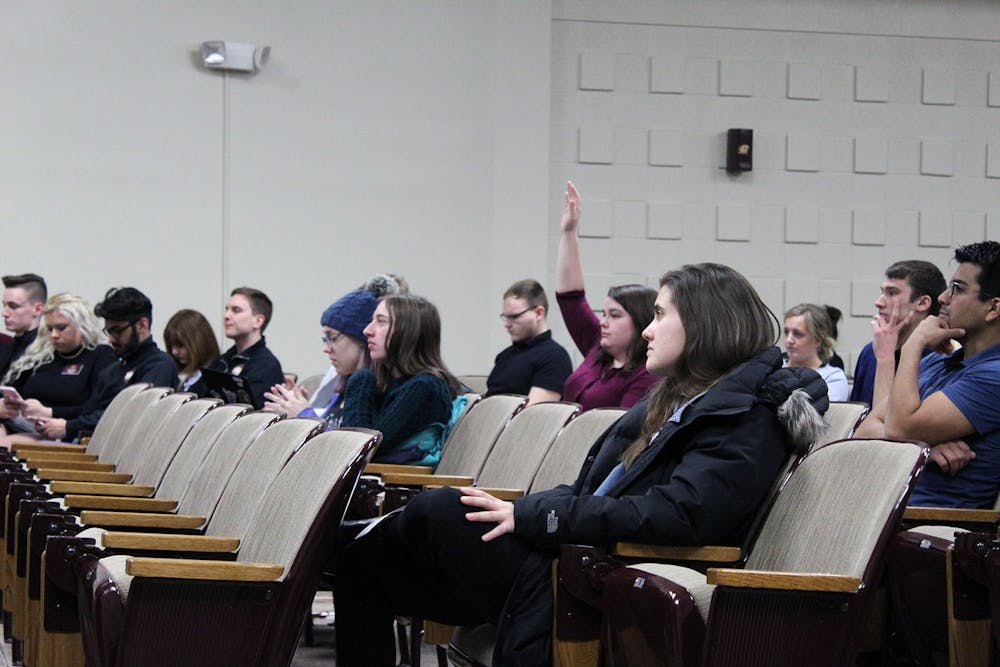SGA introduces resolutions for sustainable silverware, civic engagement faculty

Resolutions for sustainable silverware in the Down Under Food Court and a faculty position to lead civic engagement on campus were discussed the Feb. 17 meeting of Central Michigan University’s Student Government Association.
The first resolution, written by Sustainability Committee chair Kalli Walz, proposes replacing the Down Under Food Court’s plastic silverware with both compostable and metal silverware. Bins would also be placed in the food court to collect the compostable utensils.
According to the resolution, the Down Under Food Court’s current plastic silverware can take up to 1,000 years to decompose.
Compostable silverware is already available in the Down Under Food Court, Walz said, so passage of her resolution would only add bins to collect them and metal silverware. Walz suggests adding metal silverware on top of the available compostable utensils because the compostable can be used on-the-go, while metal silverware could be used to dine in.
A portion of the debate in SGA’s House, where members represent registered student organizations, centered on an increase in the price of food associated with the new silverware. President Jake Hendricks clarified after the meeting that no such price increase has occurred.
Since SGA cannot vote on resolutions during the same week they are introduced, further discussion on the resolution was tabled until its next meeting on Monday, Feb. 24.
A representative from Campus Dining will be visiting SGA during the March 16 meeting, House Leader Anna Whitwam said. Some SGA representatives suggested waiting to vote on the resolution until after that meeting.
The second resolution, written by press secretary Kaitlyn Prebelich and sponsored by membership director Brett Houle, Central Votes and Campus Election Engagement Project, proposes a staff position in the Mary Ellen Brandell Volunteer Center to “oversee all civic engagement efforts as well as (expand) democratic dialogue.”
Prebelich’s resolution cites a similar staff position implemented at New York’s Stony Brook University – comparable to CMU in terms of enrollment, tuition, and acceptance rate – that contributed to a 308% increase in registered voters among its student body.
According to a study cited in the resolution, in 2018 CMU's voter turnout rate was 10.7 percent less than the national average of 39.1 percent.
A vote on this resolution was also tabled until next week’s meeting.







